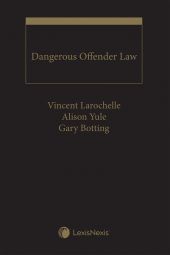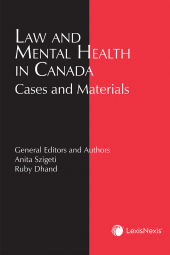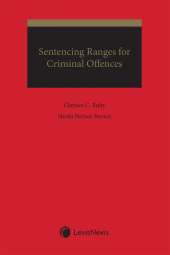Dangerous Offender Law
One Year Subscription Only Terms
Subscribers receive the product(s) listed on the Order Form and any Updates made available during the annual subscription period. Shipping and handling fees are not included in the annual price.
Subscribers are advised of the number of Updates that were made to the particular publication the prior year. The number of Updates may vary due to developments in the law and other publishing issues, but subscribers may use this as a rough estimate of future shipments. Subscribers may call Customer Support at 800-833-9844 for additional information.
Subscribers may cancel this subscription by: calling Customer Support at 800-833-9844; emailing customer.support@lexisnexis.com; or returning the invoice marked 'CANCEL'.
If subscribers cancel within 30 days after the product is ordered or received and return the product at their expense, then they will receive a full credit of the price for the annual subscription.
If subscribers cancel between 31 and 60 days after the invoice date and return the product at their expense, then they will receive a 5/6th credit of the price for the annual subscription. No credit will be given for cancellations more than 60 days after the invoice date. To receive any credit, subscriber must return all product(s) shipped during the year at their expense within the applicable cancellation period listed above.
Détails des produits
This new publication is a comprehensive, yet accessible, overview of dangerous offender law in Canada. Written by three experts in the field, including defence counsel and intervenor from the landmark R. v. Boutilier case at the Supreme Court of Canada, Dangerous Offender Law presents criminal justice participants and the Canadian public with a long overdue guide to understanding the complex sentencing regime set out in Part XXIV of Canada’s Criminal Code.
To provide a complete picture of this multifaceted topic, the authors have included the key case law relevant to each section, as well as insightful commentary. The result is a systematic and up-to-date review of the dangerous and long-term offender regimes in Canada, provided by counsel with a wealth of experience and expertise.
Dangerous Offender Law is a useful manual – and valuable reference book – for all criminal justice participants, from judges, lawyers and law students, to risk assessors (usually psychologists or psychiatrists), to law enforcement, corrections and parole personnel, to complainants and witnesses, to offenders themselves. Generally, anyone involved or interested in this specialized area of Canadian criminal law will find this volume to be an illuminating and insightful resource.
Table des matières
Introduction
The current (post-2008) regime
Chapter 1: Interpretation
[1] Court
[2] Designated offence
[3] Long-term supervision
[4] Primary designated offences
[5] Serious personal injury offences
Chapter 2: Application for remand for assessment
[1] The prosecutor’s duty
[2] Application for assessment
[3] The assessment report
[4] Extension of time
Chapter 3: Designation as dangerous offender
[1] Designation
[2] Presumption
[3] Timing
[4] Delayed application
Chapter 4: Sentencing dangerous offenders
[1] Sentencing options
[2] Indeterminate sentence
[3] Application made after regular sentencing
[4] Where offender not dangerous
Chapter 5: Reassessment upon later conviction
[1] Reassessment
[2] Use of victim evidence
Chapter 6: Long-term offenders
[1] Application
[2] Presumption of substantial risk (Subsection 753.1(2))
[3] Sentence for a long-term offender
[4] Exception
[5] Where not a long-term offender
Chapter 7: Long-term supervision
[1] Supervision in the community
Chapter 8: Breaches of LTSO
[1] Non-compliance
[2] Trial and punishment
[3] Interruption of long-term supervision
[4] Reduction in term
Chapter 9: The hearing
[1] Conditions precedent
[2] Length of LTSO
[3] Character evidence
[4] Presence of accused
Chapter 10: Appeals
Chapter 11: Post-hearing matters
[1] Disclosure to CSC
[2] Parole Board review
[3] Older cases
Appendices
 Lexis Nexis
Lexis Nexis 


